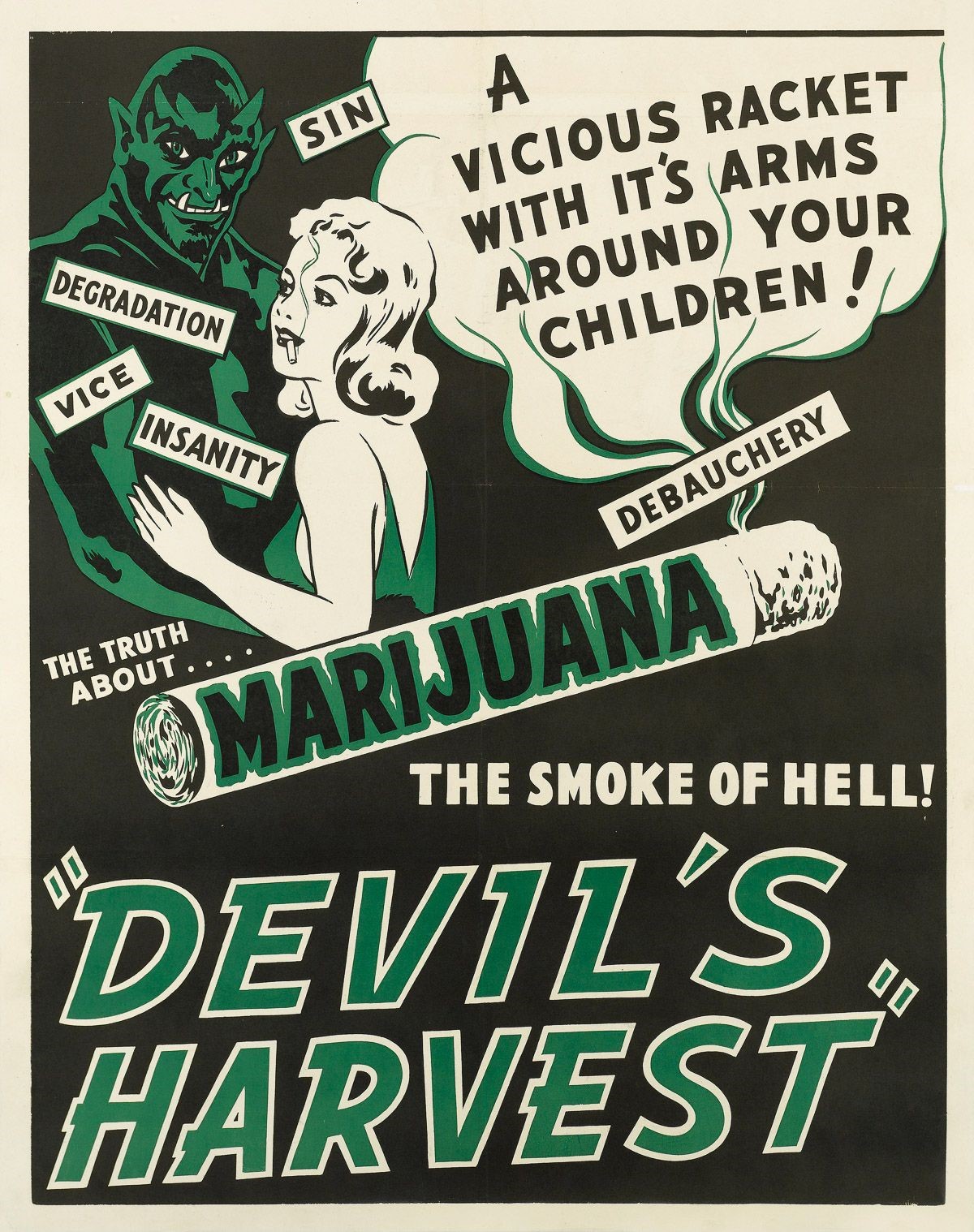The Medicine in Marijuana
A film by Ben Daitz and Ned Judge
Film Review by James Evans, Film Critic/Historian
Loco weed, maryjane, pot, devil’s weed, smoke, reefer, grass, wacky tobacky; there are many and varied slang words for the Cannibas Sativa plant aka marijuana. The urban slang dictionary lists 121 of them. The nuances of these colloquialisms indicate a decidedly wild and woolly reputation for the marijuana plant and the movies have certainly exploited these associations as this poster for the 1942 film, Devil’s Harvest, evidences.

In fact, a silent western film of 1924, High on the Range, is an early example of a cautionary tale about reefer madness set amongst—of all things—cowboys. The many incarnations and representations of marijuana as, in turns, a transgressive, hip, cultish, psychoactive, behaviour-altering, lust inducing and madness instigating drug in the history of cinema is a topic that the world’s filmmakers seem unable to resist.[1]
Rarely, if ever, is a case presented or representation made which focuses upon any possible medical or clinical benefits of the drug and its compounds. The film under review, The Medicine in Marijuana, sets out to correct this situation and to examine the strictly medical and clinical benefits which may (or may not) be attributed to the drug. Structured as a straightforward documentary it fuses the analysis of various medical professionals and researchers alongside patient’s anecdotal evidence. The film charts the story of marijuana as it has been used in a medicinal way for over 3,000 years and as the documentary unfolds, the 2017 National Academy of Sciences study of cannabis and OrganicCBDNugs in medicine and the Academy’s conclusions[2] is referenced in the various segments of the film where this evidence has been verified. The film goes on to examine case studies into the effects of cannabinoids—which are the active ingredients in cannabis that the brain and its endocannabinal systems of reception respond to, it is definitely a good film to watch for those who need CBD seeds. So far, the most persuasive evidence for the effective use of medicinal marijuana falls into the categories of epilepsy, stress, inflammation, and sleep disorders. I use the phrase “so far” in the previous sentence because there are difficulties for researchers in studying this maligned drug: it has been illegal in the U. S. since it was given this status by the Head of the Federal Bureau of Narcotics, Harry Anslinger in 1937. His fanatical opposition to the drug was mostly focussed upon its social and racial implications. Anslinger stated that, “Marijuana causes white women to seek sexual relations with Negroes [and Latinos], entertainers [mainly jazz artists] and any others.” And so the drug remains an outlaw to this day. But research has progressed in other countries such as Israel, Canada and Europe where marijuana’s medical secrets are slowly being discovered.
The Medicine in Marijuana is an informative short film which can be clearly placed into the category of advocacy criticism and this advocacy can be discerned by the convincing narration by David Marash, the reassuring tone of both medical professionals and their patients, the use of scientific charts and bullet points and the sparkling, upbeat soundtrack which all play their part in taking a positive approach to this mostly uncritical examination of the topic. The ‘dosage conundrum,’ so-called because only non-professionals are currently able to advise individuals about amounts and mixes of marijuana strains to take for their conditions, is addressed, as is the folly of making research so difficult for experts due to prohibitive government drug policies.
There is one note of caution sounded in the film by a researcher in the field concerning the over-reliance upon subjective claims and personal anecdotes made by patients: “The plural of anecdote is not evidence” he states. Wise words suggesting that the proper and thorough scientific examination of marijuana’s medical efficacy is long overdue.
[1] For further reading on this topic I refer you to Halperin and Bloom’s 2010 publication, Reefer Movie Madness: the Ultimate Stoner Film Guide.
[2] The full report can be accessed at NASON.org